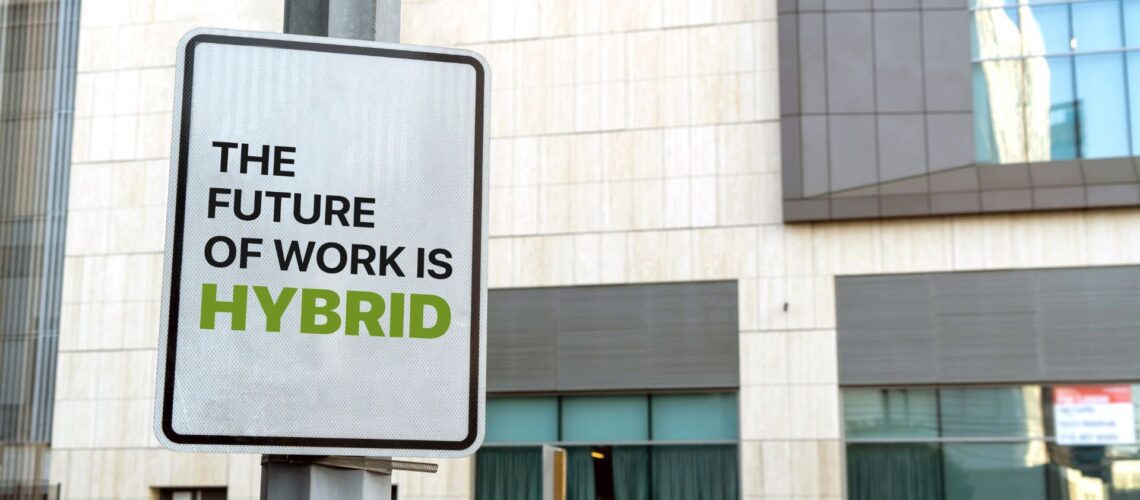Five years after the pandemic transformed how we work, hybrid arrangements have become the new normal for many UK organisations. Recent Office for National Statistics data shows that 28% of working adults in Great Britain now follow hybrid working patterns¹, with this trend steadily growing since March 2022. For science and technology leaders, understanding how to maintain strong team culture whilst balancing office and remote work has become essential for organisational success.
The benefits of hybrid working are well-documented: reduced absence, increased employee wellbeing, lower facility costs, and enhanced talent retention. However, these advantages can be undermined if team culture deteriorates due to reduced physical interaction and connection between colleagues.
Understanding the Culture Challenge in Hybrid Teams
Creating and maintaining positive team culture can feel elusive at the best of times. Many organisations respond to culture challenges by introducing employee satisfaction surveys and additional benefits, hoping these will improve workplace dynamics. However, research consistently shows that effective team culture fundamentals remain unchanged regardless of working arrangements: it centres on trust, respect, and appreciation between team members².
The Chartered Institute of Personnel and Development (CIPD) reports that whilst 74% of UK organisations now operate hybrid working models, the key to success lies not in the working arrangement itself, but in how leaders adapt their approach to build genuine connections and trust within their teams³.
Common Hybrid Culture Challenges and Solutions
Communication Barriers
Email and instant messaging dominate hybrid team communications, yet tone and intent are easily misconstrued through these channels. Leaders can address this by encouraging an ‘explanation culture’ where team members provide context alongside requests. Instead of simply asking for data, explaining what the information is needed for and the required timeframe creates conversational exchanges that build positive relationships between colleagues who may rarely meet in person.
Invisible Team Members
In larger organisations, virtual meetings often feature participants with cameras and microphones switched off. Whilst not every meeting can accommodate full participation, ensure smaller sub-teams have regular catchups where members are expected to contribute project updates and share their current workstreams actively.
The Hybrid Divide
Regularly evaluate your team’s working arrangements to ensure fairness across all members. Have newer team members received the same remote working opportunities as established employees? Has the split between office and home working been distributed equitably? Unreviewed hybrid schedules can unknowingly damage team culture through perceived unfairness.
Lack of Camaraderie
Without natural ‘water cooler’ moments, building genuine connections requires intentional effort. Rather than forcing personal sharing in meetings, leaders should model openness about their non-work selves, encouraging others to feel comfortable doing the same. Additionally, regularly sharing team successes and acknowledging individual contributions helps colleagues connect through shared ‘work pride’ in their teammates’ achievements.
Building Trust in Hybrid Environments
Research by Great Place to Work UK demonstrates that employees are loyal to organisational culture rather than strategy⁴. In hybrid environments, trust becomes even more critical as physical supervision decreases and team members must rely on each other’s commitment and reliability.
Trust-building in hybrid teams requires leaders to move beyond traditional oversight approaches. The Harvard Business Review’s research on trust identifies key behaviours that stimulate collaboration, including transparent communication, consistent follow-through on commitments, and creating psychological safety where team members feel comfortable expressing concerns or ideas⁵.
For science and technology teams, this trust-building approach particularly resonates. Technical professionals appreciate clear expectations, measurable outcomes, and evidence-based decision making. When leaders provide structured frameworks for collaboration whilst demonstrating genuine care for team members’ professional development, trust naturally develops.
Practical Strategies for Hybrid Team Leaders
Create Structured Connection Points Establish regular team rituals that bring members together, whether virtually or in-person. These might include weekly project showcases, monthly innovation sessions, or quarterly team development workshops.
Invest in Individual Relationships Schedule regular one-to-one conversations with each team member, focusing not only on work progress but on their career aspirations, challenges, and ideas for team improvement.
Maintain Consistent Communication Standards Develop clear protocols for response times, meeting etiquette, and information sharing that apply equally to office-based and remote team members.
Recognise and Celebrate Success Actively acknowledge both individual achievements and collaborative successes, ensuring remote team members receive equal recognition for their contributions.
Measuring Culture Success in Hybrid Teams
Unlike traditional metrics, hybrid team culture requires different success indicators. Look for evidence of voluntary collaboration between team members, proactive problem-solving, and genuine enthusiasm for shared objectives. Teams with strong hybrid culture demonstrate high engagement levels regardless of individual working locations and maintain consistent performance standards across all members.
The most successful hybrid teams develop what researchers term ‘psychological safety’ – an environment where members feel confident taking interpersonal risks, sharing innovative ideas, and admitting mistakes without fear of negative consequences.

Frequently Asked Questions About Hybrid Team Culture
Research suggests meaningful culture change typically takes 6-12 months with consistent leadership effort. However, you can begin seeing positive indicators within 4-6 weeks of implementing structured trust-building activities and improved communication practices.
Focus on understanding underlying concerns rather than mandating participation. Some individuals may worry about reduced visibility or career development opportunities. Address these concerns directly through clear communication about performance expectations and advancement criteria that apply equally to all working arrangements.
Successful technical teams create dedicated virtual collaboration spaces, maintain shared documentation systems, and schedule regular ‘innovation time’ where team members can explore new ideas together. The key is making collaboration intentional rather than leaving it to chance encounters.
Taking Action: Your Next Steps in Team Development
The evidence is clear: hybrid working is here to stay, with 28% of UK workers now following this pattern and the trend continuing to grow. Rather than viewing this as a challenge to overcome, successful leaders see it as an opportunity to build stronger, more resilient team cultures based on trust, clear communication, and shared purpose.
The most effective hybrid teams don’t happen by accident – they’re created through intentional leadership, structured approaches to relationship building, and consistent commitment to team member development. By implementing these evidence-based strategies and maintaining focus on the fundamentals of trust and respect, leaders can build team cultures that not only survive the hybrid transition but thrive because of it.
Your team’s culture is your competitive advantage. Invest in developing it properly, and you’ll create an environment where every team member – regardless of their working location – can contribute their best work towards shared success.

